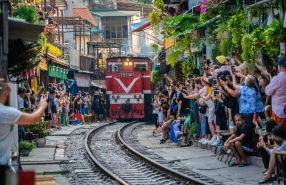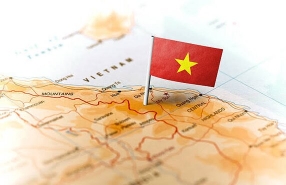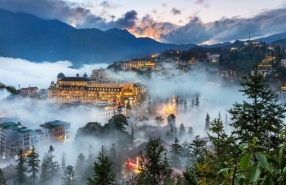What To Do In Cai Be? Top 07 Best Things To Do In Cai Be, Vietnam
Sunday, April 28, 2024
Places to visit & things to do

Located 120 kilometers southwest of bustling Ho Chi Minh City, Cai Be thrives as a charming small town, designated as one of the top destinations for day trips in the Mekong Delta. Bordered by the majestic Mekong River and interlaced with numerous small canals, it earns its renown from its vast floating market, but its appeal goes far beyond that! The province of Tien Giang, which houses Cai Be, reveals other treasures, both natural and cultural. Wondering what to do in Cai Be? Discover the top 07 best things to do in Cai Be, Vietnam in this article.
Table of Contents
1. Cai Be floating market

Alongside the Cai Rang and Nga Bay floating markets, Cai Be floating market ranks among the top three wholesale markets for fruits and rice. Today, to meet the growing demand, the Cai Be Floating Market in Tien Giang not only offers fruits and vegetables, rice, and agricultural products but also a small onboard dining service.
Located along the Tien river, at the confluence of the provinces of Tien Giang, Vinh Long, and Ben Tre, Cai Be Floating Market is one of the largest floating markets in the southern region of Vietnam. Its origin dates back to the arrival of Northern Vietnamese in the region between the 17th and 18th centuries. Given the almost complete absence of land transportation in this marshy region, floating markets emerged as the main hubs for commercial exchanges, becoming emblematic of the characteristic lifestyle of the Mekong Delta. From the early 19th century to the late 20th century, Cai Be floating market was the reference point for rice, dried fish, dried areca nut, and other products, notably exported to Cambodia.
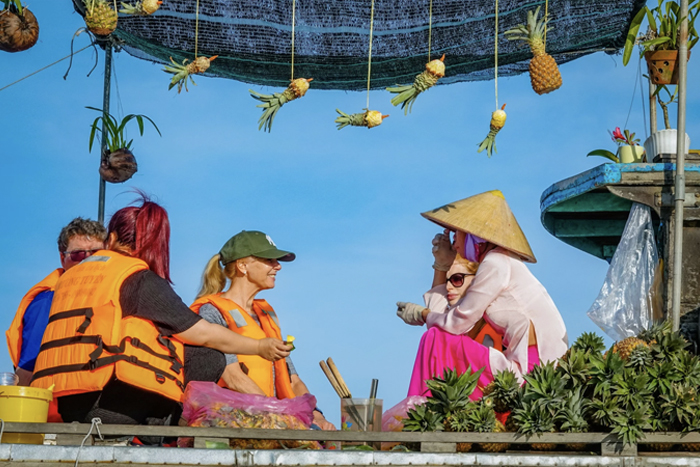
What to do in Cai Be? Visiting Cai Be floating market offers an authentic immersion into the life of the Mekong Delta. Visitors can observe traditional commercial transactions, interact with local residents, and discover traditional craftsmanship. It is also a unique photographic opportunity to capture life on the water. In essence, it is an unforgettable experience to explore the vibrant culture of the region.
2. Tan Phong island

Nestled between the waters of the Tien River and the adjacent shore to Cai Be floating market, Cu Lao Tan Phong, also known as Tan Phong island, offers a lush haven of tranquility, perfect for immersing oneself in nature.
Formerly known as Tan Dong during the French colonization era, this island is renowned for its hospitable residents and sun-drenched orchards teeming with exotic fruits. Accessible in less than 10 minutes by ferry, you find yourself in a peaceful and verdant universe, to be explored at your own pace, whether by bike or rowboat. As you wander, you'll encounter artisanal villages specializing in crafting conical hats, regional cakes, or weaving water hyacinth leaves. Traverse the island's only road to delve into plantations of rambutans, jackfruits, and other longans. You can even pick them yourself at a very reasonable price. Tan Phong also offers the opportunity to experience the traditional music of the Southern Delta, Don Ca Tai Tu, while indulging in delicious local dishes like the famous snail rice.
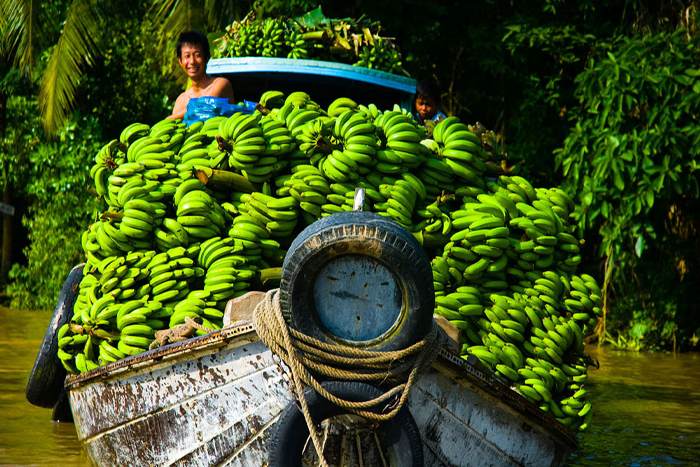
Exploring Tan Phong island provides a unique experience amidst the lush nature of the Mekong Delta. Visitors can rejuvenate in a peaceful environment, explore orchards brimming with exotic fruits, and discover traditional artisanal villages. Moreover, the island offers the chance to engage in cultural activities such as the traditional music of the Southern Delta and to savor authentic local dishes. It's an opportunity to immerse oneself in the natural beauty and culture of this iconic region of Vietnam.
View more: Cai Be Floating Market And Tan Phong Islet
3. Vinh Trang pagoda
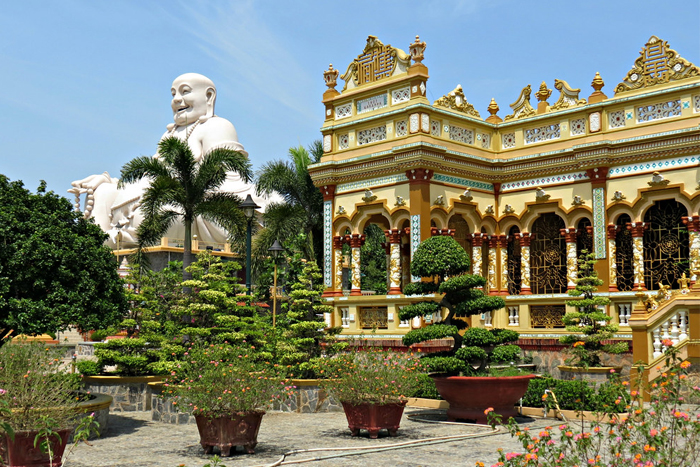
With its unique architecture, Vinh Trang pagoda is a cherished destination for both believers and visitors stopping over in Tien Giang province. The architecture of Vinh Trang pagoda is a surprising yet harmonious blend of Eastern and Western influences, enriched with typical Vietnamese characteristics. Initially built during the Minh Mang period in the early 19th century, it has undergone numerous restorations and embellishments, evolving into the vast religious complex it is today: a 2-hectare site comprising various areas such as the Amitabha Buddha, the main hall, the Quan Yin station with its reclining Quan Am Buddha, the tower garden, and more. Upon entering, the pagoda impresses with its three-entrance gate adorned with porcelain shards arranged to illustrate the history of Buddhism.
Vinh Trang pagoda houses around sixty Buddha statues, including a reinforced concrete Maitreya Buddha unveiled in 2010, an 18-meter-high Amitabha Buddha, and a 10-meter-high Shakyamuni Buddha whose construction was completed in 2013. Highly visual, the decoration of Vinh Trang is characterized by the sophistication of its statues and the use of precious woods.
4. Thoi Son island
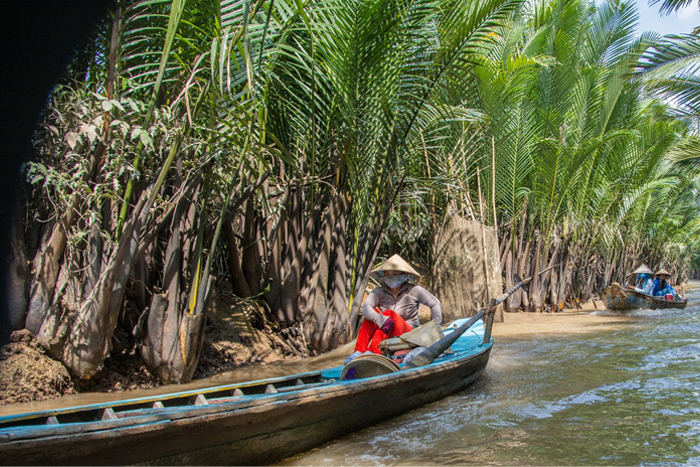
With its characteristic ecosystem of the Mekong Delta, Thoi Son Island is becoming increasingly popular as a nature-centric destination.
Also known as Lan island, Thoi Son is part of the Thoi Hoa hamlet in the city of My Tho. This vast alluvial expanse of 1,200 hectares is covered in greenery and crisscrossed by small canals winding through tropical fruit orchards. Visitors come here for a boat ride, to explore the rambutan and longan orchards, or even to try their hand at fishing in the muddy canals. An enjoyable and delightful experience can be had aboard a horse-drawn carriage to discover Thoi Son Island from a different perspective. Other activities are also available, such as learning about local beekeeping. Don't miss the chance to savor the local cuisine while immersing yourself in the tunes of Don Cai Tu, the traditional folk music of the region.
5. The church of Cai Be

Overlooking the bustle of the floating market, the church of Cai Be stands proudly along the banks of the Tien River. The construction of this church, led by the German priest Adolphe Keller and dedicated parishioners, spanned from 1929 to 1932. Its cross-shaped architecture, with a central body and two harmonious auxiliary wings, reflects remarkable aesthetic balance. Inside, the soft light filtered through the stained glass creates a peaceful atmosphere, while the spire, the tallest in the entire Mekong Delta, is adorned with a terracotta sculpture depicting the virgin and child. The four bells, cast in France in 1931, add a touch of solemnity to this majestic religious edifice.
6. Old houses of Dong Hoa Hiep

In the commune of Dong Hoa Hiep, in Cai Be, are several remarkable old houses, including Ba Duc House, Cai Huy House, and Anh Kiet House. These residences are emblematic examples of the region's traditional architecture, bearing witness to the rich historical heritage of the locality. Some of these houses have been restored as part of government-supported projects, thus preserving their unique character and cultural significance for future generations.
Located approximately 46 km from the city of My Tho is the picturesque village of Dong Hoa Hiep, renowned for its ancestral houses dating back over 200 years, exuding a mysterious and timeless beauty. These houses, built in the characteristic architectural style of garden houses in the southern delta, captivate visitors with their quaint charm. Exploring the village by bicycle, one is fascinated by the weathered facades and graceful colonnades, evoking a sense of timeless elegance. Inside, the sumptuous interiors are adorned with rich traditional decorations and furnished with finely carved pieces, housing precious collections of ancient ceramics. In addition to its residential aspect, Dong Hoa Hiep is also renowned for its traditional craftsmanship, adding an additional dimension to its picturesque charm.
7. Local workshops

In the vicinity of Cai Be, numerous small workshops and factories are engaged in transforming local products into typical culinary delights such as rice paper, coconut candies, fish sauce, and dried fish. During your visit, you will have the opportunity to explore the craftsmanship of the locals and taste these regional specialties, imbued with local authenticity and tradition.
In conclusion, Cai Be Vietnam offers a plethora of captivating experiences for visitors eager to explore the Vietnamese Mekong Delta. From the renowned floating market to the charming streets lined with old houses, to boat rides along winding canals, every moment spent in Cai Be is an immersion into local life and the cultural richness of the region. With its lush orchards, historical sites, and delightful culinary specialties, Cai Be promises an unforgettable adventure for travelers seeking authenticity and discovery.
We hope the information about top 07 best things to do in Cai Be, Vietnam in this article is helpful and assists you in having an enjoyable and authentic experience in Cai Be, Vietnam. We believe you will have a wonderful journey and many memorable experiences. For a satisfying experience that exceeds your expectations, please CONTACT AUTOUR ASIA, Vietnam Travel Agency now.
Related travel guide
Other similar articles
CUSTOMIZABLE BY LOCAL EXPERTS
Personalized trip at the original price!
REFUND GUARANTEE
We believe in our work and promise to give you money back.
GOOD PRICE / QUALITY
95% satisfied more than expected!
24/7 LOCAL SUPPORT
We are always available online to provide assistance at any time.
Most read articles
Autour Asia is highly recommended on
Embracing the mission of "Satisfied more than expected" and providing authentic experiences, we have received numerous recommendations on reputable travel forums:














